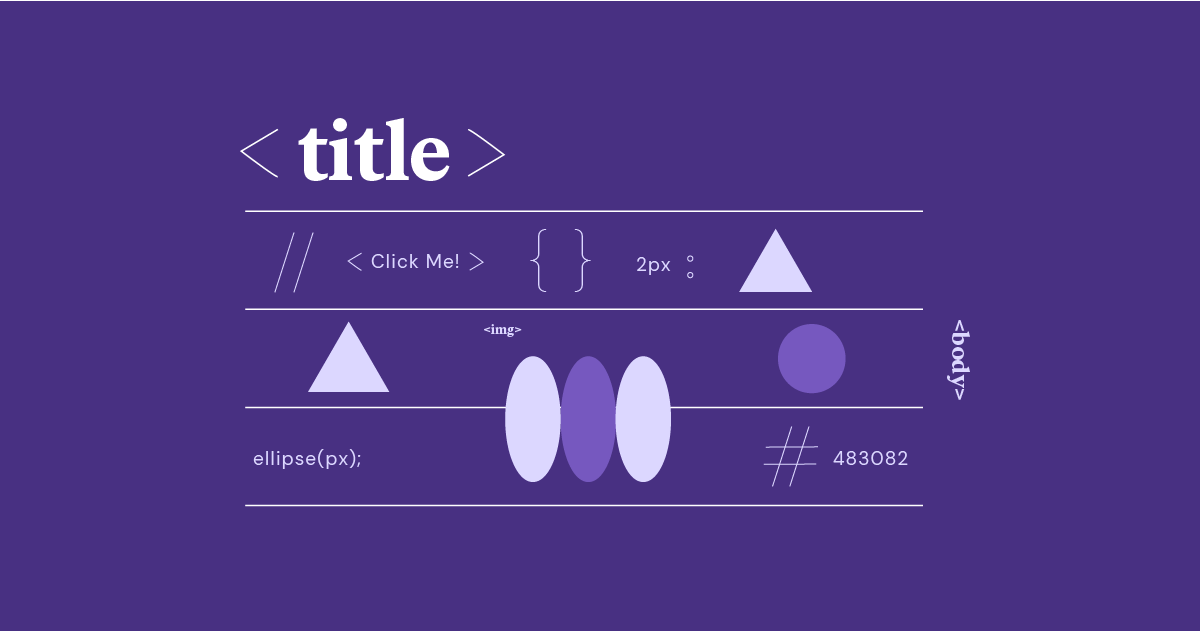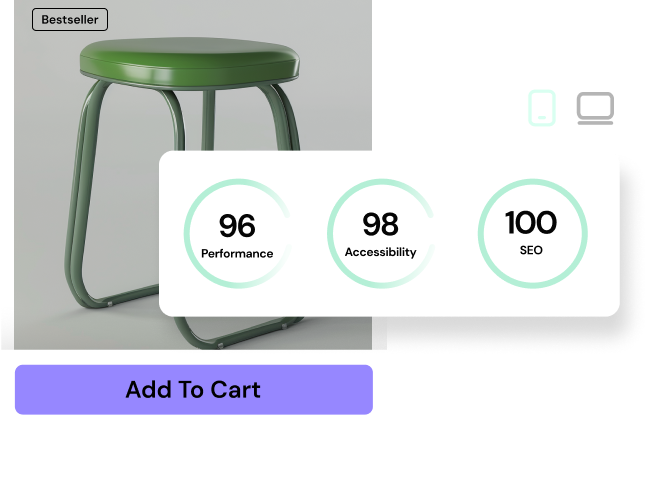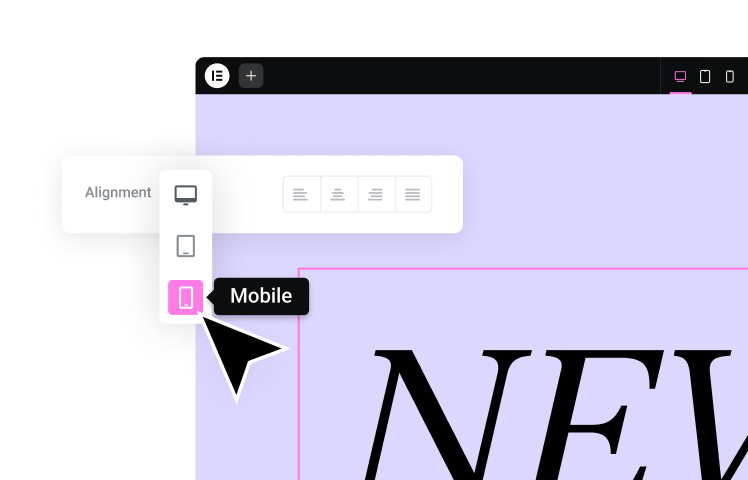Table of Contents
In the race to deliver the fastest, most engaging websites, lazy loading has become a secret weapon for web developers and savvy site owners. But what exactly is lazy loading? Simply put, it’s a clever technique that tells your website to hold off on loading certain elements until the very moment a user needs them. Think of it as on-demand loading for your website!
Why should you care? Here’s the deal:
- Snappier Page Loads: Visitors won’t be left staring at a blank screen while everything loads. Lazy loading prioritizes the content people see first.
- Smoother User Experience: No more frustrating jumps or layout shifts as images pop into existence mid-scroll.
- Saved Bandwidth: Less data transferred means happier users (especially on mobile) and potentially lower hosting costs for you.
Lazy Loading – The Fundamentals
What is Lazy Loading?
Picture this: you visit a website, and all the images, videos, and fancy widgets load instantly. While that might seem ideal, this traditional loading approach often needs to be improved. Your browser gets swamped trying to download everything at once, leading to a frustratingly slow experience.
Lazy loading flips the script. Instead of saying, “Load everything now!” it instructs the website: “Let’s start with the essentials and load the rest as the user scrolls down.” This means the content that appears immediately on your screen gets top priority, giving a sense of instant loading. As you interact with the page, elements below the fold (the visible portion of the page) gracefully appear.
Why Use Lazy Loading?
Here’s a breakdown of why lazy loading is quickly becoming a best practice for modern websites:
- Lightning-Fast Initial Page Loads: By prioritizing above-the-fold content, your website feels snappy and responsive, hooking users in from the first moment.
- Enhanced User Experience (UX): There are no more awkward layout jumps as images belatedly load. Lazy loading ensures a seamless scroll with content that smoothly appears, creating a polished experience.
- Bandwidth Conservation: Websites, especially image-heavy ones, can gobble up data. Lazy loading reduces the strain on both the user’s data plan and your server resources.
- SEO Potential: While not a direct ranking factor, lazy loading contributes to faster page speeds, which are a key aspect of Google’s Core Web Vitals – a set of metrics impacting search engine rankings.
Types of Content for Lazy Loading
- Images: The poster child for lazy loading, images are often the biggest culprits behind slow loading times.
- Videos: Embedded videos can be hefty – lazy loading delays their download until the user initiates play.
- Iframes: These embedded elements (think maps and social media widgets) can benefit from delayed loading.
- Scripts, Text, and More: While less common, lazy loading can be applied to text-heavy blocks, scripts, or other elements to maximize performance gains.
How Lazy Loading Works
Traditional Loading vs. Lazy Loading
Let’s imagine a classic website built without any optimization. Here’s what typically happens:
- The Request: You type in a URL and hit enter.
- The Server Responds: The website’s server sends a giant bundle of files – HTML, CSS, JavaScript, images… the whole nine yards.
- The Download: Your browser starts downloading this big package of data.
- The Render: Only once everything is downloaded can your browser start constructing and displaying the page.
The catch? All those heavy elements, like images hidden way down the page, delay what matters – the content you see on the screen. Lazy loading changes the game!
Here’s a simplified view of how a lazy-loaded website operates:
- The Request: Same as before.
- The Server Responds: Sends the essential HTML, CSS, and JavaScript to render the initial view. Images and other potential lazy-load candidates might get basic placeholder instructions.
- The Render: The browser builds the visible part of the page with lightning speed.
- The “On-Demand” Magic: As you scroll, a bit of JavaScript magic (often using the Intersection Observer API) kicks in, detecting when off-screen elements are nearing your viewport and triggering their download.
Technical Mechanisms
Let’s peek under the hood at the common ways to implement lazy loading:
- JavaScript (with Intersection Observer API): JavaScript libraries and custom code using the Intersection Observer API offer precise control over what elements to lazy load and when. The API efficiently checks when an element enters the visible part of the browser window.
- Native ‘loading’ Attribute: Modern browsers increasingly support the loading=”lazy” attribute within <img> and <iframe> tags. This provides a super simple way to instruct the browser to handle lazy loading for these elements natively.
Implementing Lazy Loading
Manual Implementation
For the hands-on folks with web development experience, here’s a breakdown of the common approaches to manual lazy loading:
- JavaScript (with Intersection Observer API): This involves writing custom JavaScript code. A special tool called the Intersection Observer API helps the website detect when off-screen elements are about to enter the visible part of the browser’s screen (the viewport). It then triggers the loading process.
- Native ‘loading’ Attribute: Modern browsers increasingly support the loading=”lazy” attribute within <img> and <iframe> tags. Add this attribute to your image or iframe code, and the browser will automatically delay their loading until the user scrolls near them.
Lazy Loading Libraries
If you want to save time and tap into advanced features, a dedicated lazy loading library is a great option. Popular choices include:
- Lozad.js: Lightweight and simple to use.
- Lazysizes: Feature-rich, offering advanced customization and responsive image handling.
- Vanilla Lazyload: No dependencies, great for small projects.
WordPress Considerations
WordPress users have it easy! Implementing lazy loading often involves installing a plugin. Here are some popular options:
- WP Rocket: Premium caching and optimization plugin with lazy loading included.
- Smush: Popular for image optimization, it also offers lazy loading.
- Autoptimize: Offers lazy loading alongside other performance tweaks.
Lazy Loading Best Practices
When to Use (and When Not to Use) Lazy Loading
Lazy loading is fantastic, but there are more than one-size-fits-all solutions. Here’s the golden rule:
- Do Lazy Load: Content below the fold (the initially visible area on any page). This includes images, videos, embedded elements, and even blocks of text in long articles.
- Don’t Lazy Load: Anything critical to the initial page view – your hero image, navigation, or above-the-fold elements that immediately attract your visitors.
Placeholder Techniques
Think of placeholders as stand-ins for your content while it loads. They maintain visual structure and provide a sense of progress. Here are common techniques:
- Low-Quality Image Placeholders (LQIP): Loads a tiny, pixelated version of your image first, which smoothly transitions into the full-resolution version.
- Dominant Color Placeholders: This function extracts the dominant color of your image and fills a box with that hue, offering a visually pleasing placeholder.
- Skeleton Loaders: Mimic the layout of your content (e.g., lines for text, boxes for images) to create a more realistic “loading” experience.
User Experience (UX)
Lazy loading is a powerful UX tool, but use it thoughtfully:
- Clear Loading Indicators: Spinner icons or subtle animations reassure users that things are happening.
- Fade-in Effects: Smooth transitions when your lazy-loaded content arrives lessen the jarring effect.
- Error Handling: Ensure you have a fallback if content fails to load. A broken image symbol or a reload button can help.
Additional Considerations
- Prioritize Accessibility: Lazy loading shouldn’t compromise screen readers or assistive technology. Use appropriate alt tags and loading descriptions for all content.
- Think Responsiveness: Images might need to load earlier on smaller screens where the content appears “above the fold” at different resolutions.
Lazy Loading and SEO
Potential SEO Impacts
Search engines, like Google, prioritize websites that load quickly and provide a delightful user experience. While lazy loading may not be a direct ranking signal, its impact on how users interact with your website definitely matters! Let’s dig deeper:
- Google’s Image Crawling: Search engines have become adept at understanding and indexing lazy-loaded images. However, it’s wise to provide enough context to help bots understand what your images represent.
- Core Web Vitals: Lazy loading directly contributes to faster load times, which plays into Google’s Core Web Vitals. These are metrics that measure key aspects of user experience, such as loading performance (Largest Contentful Paint), responsiveness, and visual stability.
Best Practices for SEO-Friendly Lazy Loading
Let’s make lazy loading work in your favor for search engines:
- Use Descriptive Placeholders: Don’t just leave empty spaces! Implement placeholders that give hints about the content. Image placeholders with meaningful alt text are particularly important for image SEO.
- Ensure Accessibility: Lazy-loaded content should still be discoverable by assistive technologies. Semantic HTML, alt text descriptions for images, and ARIA labels (when applicable) remain crucial.
- Structured Data: If applicable, use structured data (like Schema.org markup) to give search engines more context about your content, whether it’s loaded immediately or loaded later.
- Server-Side Rendering (SSR): For content-heavy or JavaScript-reliant sites, consider SSR. This sends pre-rendered HTML to the browser, ensuring all content is easily indexable (even if you lazy load components later on for snappier user interactions).
Beyond the Basics
- Monitor Crawl Behavior: Use tools like Google Search Console to check how Google sees your pages. Are lazy-loaded images being indexed correctly?
- Preload Critical Content (If Needed): In rare cases, you might pre-load an initially hidden image using <link rel=”preload”> if it’s essential for SEO purposes while keeping it lazy-loaded for a balanced user experience.
Advanced Lazy Loading Techniques
Responsive Lazy Loading
Screen sizes vary wildly, and the “fold” changes on desktops, tablets, and phones. Responsive lazy loading tailors your implementation for optimal loading across devices. Here’s what to consider:
- Breakpoints: Define different loading thresholds depending on screen sizes. Images need to load sooner on smaller displays, where content is stacked vertically.
- Image Sizes: Pairing lazy loading with responsive image techniques (like srcset and sizes attributes) ensures users get the appropriately sized image, saving bandwidth.
Lazy Loading for Single-Page Applications (SPAs) and E-commerce
- SPAs: These apps are often JavaScript-heavy. Lazy loading of individual page components as they’re needed provides a smoother experience, reducing initial load times.
- E-commerce: Product grids and image galleries are perfect candidates for lazy loading. Enhance the shopping experience by prioritizing product thumbnails and delaying detailed image loads until a user shows interest.
Performance Monitoring and Troubleshooting
Staying on top of your lazy loading performance is crucial. Here’s your toolkit:
- Browser DevTools: The Network panel shows you when resources are loaded, helping you fine-tune your lazy loading triggers.
- WebPageTest.org: This fantastic tool offers detailed performance reports, including waterfalls that visualize exactly how lazy loading impacts your page load process.
- Real User Monitoring (RUM): Get real-world data on how lazy loading affects page speed for your actual visitors.
Troubleshooting Tips
Sometimes lazy loading can throw curveballs:
- Content Jumps on Load: To avoid disruptive layout shifts, ensure your placeholders have the same dimensions as the original content.
- Flickering/Reloading: If your lazy loading triggers are too aggressive, images might load and then briefly disappear as the user scrolls further. Tweak your settings for more seamlessness.
- Conflicts with Other Scripts: If you combine multiple JavaScript libraries, look for interactions that might break your lazy loading functionality.
Going Even Further
- Predictive Lazy Loading: Experiment with predictive algorithms that try to anticipate what content the user will likely need next, pre-loading it for an ultra-snappy feeling.
- Prioritized Lazy Loading: Assign higher priority to certain elements within a lazy load group, ensuring the most important content loads even sooner.
The Future of Lazy Loading
Web technology moves at a blistering pace, and lazy loading is set to evolve alongside it. Here are a few exciting directions on the horizon:
- Even Smarter Lazy Loading: Expect more intelligent algorithms and predictive loading strategies that learn user behavior and anticipate content needs. Your website could load things before you even realize you want them!
- HTTP/3’s Potential: The new HTTP/3 protocol has features that could streamline resource prioritization, potentially making lazy loading even easier to implement.
- Integration with Image CDNs: Image CDNs already focus on optimization and delivery. They could leverage lazy loading on a larger scale, with advanced image format support and automatic placeholder generation.
Lazy Loading in Progressive Web Apps (PWAs)
PWAs are web apps that blur the lines between websites and native mobile apps. Here’s where lazy loading shines:
- Offline Functionality: Lazy loading reduces the initial download size for PWAs, making them installable and usable even with flaky internet connections.
- Performance be as a Feature: PWA users expect an app-like experience. Lazy loading ensures fast initial loads and smooth interactions throughout their usage.
Lazy Loading and Mobile-first Design
Mobile data usage is a concern for many users. Lazy loading becomes even more crucial in these scenarios:
- Prioritizing Content: Focusing on minimizing the initial load to ensure your message loads instantly.
- Optimized for Touch: Lazy loading should be seamless with touch interactions like fast swiping.
Final Note: While lazy loading is a powerful tool, remember it’s not a miracle cure for every poorly optimized website. Prioritizing clean code, efficient media formats, and smart content structure are equally important for a blazing-fast web experience.
Conclusion
Lazy loading has become an indispensable strategy in the race to win the hearts of internet users (and the favor of search engines). It transforms websites from sluggish and frustrating to snappy and engaging.
Lazy loading is about more than just delayed loading; it’s a philosophy of web performance optimization. By serving only the content users need at the precise moment they need it, you can achieve the following:
- Dramatically improved page load speeds
- A delightful user experience, especially on mobile devices
- Reduced server load and bandwidth savings
Ready to give lazy loading a try? The time for slow websites is over. Embrace this technique and watch as your website’s speed and user satisfaction soar!
Looking for fresh content?
By entering your email, you agree to receive Elementor emails, including marketing emails,
and agree to our Terms & Conditions and Privacy Policy.






